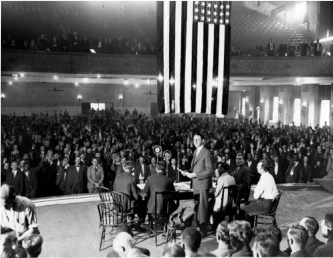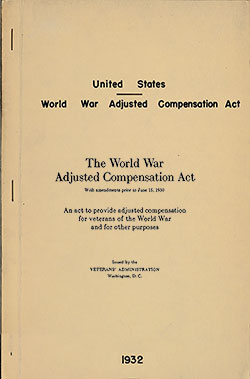
Picture courtesy of Western Journal
The Debate Continues

Picture courtesy of History
The Bonus Army was not done debating with the government. They returned to Washington in 1933. Franklin Roosevelt (pictured to the left) was now the president.
"I would like to see fair consideration for everyone and I shall always be grateful for those who served their country. I hope we never have to ask for such service again."
~ Eleanor Roosevelt

Picture courtesy of Washington Area Spark
Introducing Diplomacy
Debate over the demands continued in 1933. President Roosevelt treated the marchers differently than Hoover had, with ready-to-use camps and food. Roosevelt offered the marchers jobs in the Civilian Conservation Corps (CCC). These jobs were typically only for certain workers but President Roosevelt changed the rules as part of a diplomatic solution. He also offered the marchers a ride home if they didn’t want a CCC job.

Picture courtesy of WETA
More Diplomacy
In 1933, Eleanor Roosevelt (pictured above) was sent to the Bonus Army Camp as an emissary. She visited with the men, encouraging them to reminisce about the war. She volunteered in the camp and then left the camp with good feelings on both sides. The diplomacy she showed helped the men feel heard and many soon accepted the CCC jobs that were offered.

Picture courtesy of GG Archives
Resolving the Debate
Congress passed a bill, the Adjusted Compensation Payment Act, in 1936 to authorize early payment of the benefits, nine years before they were scheduled. This overrode Roosevelt's veto. The payments were about $580 per veteran.

